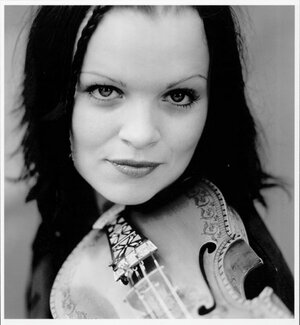“Myllarguten’s Wedding March” was written by Torgeir Augundsson for the woman he loved when she married another man. He sat behind a rock when the bridal procession passed by on its way to the church, and his voice calling out the name of his beloved – “Kari! Kari!” – can be heard in the tune.
Torgeir Augundsson (1799-1872) learned how to play the violin very early on, and at the age of 8 he was already playing regularly at auctions and weddings all over Telemark. Around the same time he started to work every summer as a shepherd in order to earn money. He took his fiddle with him everywhere, and learned tunes and playing techniques from many of the fiddlers he met throughout his travels.
By the time he reached the age of 15 Augundsson, or Myllarguten (the Miller’s Boy), as he was called more and more often, was considered one of the best fiddlers in Telemark. In 1817 he played at the open-air markets in Skien and Kongsberg for the first time. In the 1820s he travelled each spring to Bergen, Hardanger, Voss or Suldal to play at weddings and other events. He thus came into contact with many of the most well-known fiddlers on the west coast of Norway, and learned a large number of local tunes from them.
In the summer of 1831 Augundsson met the renowned violinist Ole Bull in Bergen, and they spent several days together at Bull’s home in Valestrand, playing the fiddle for each other. Bull was very interested in Augundsson’s tunes, and captured some of them in musical notation. Bull’s encounter with this fiddler and his music would come to have a profound influence on him as both a violinist and a composer.
The years 1830 to 1850 would, in many ways, mark Augundsson’s best period as a fiddler. He was famous all over the country, and was engaged to perform regularly both on the east coast and the west coast of Norway. All the same, his financial situation was extremely precarious. When Ole Bull returned from a trip abroad in 1848, he was interviewed by the newspapers. He made it a point to mention the impact that Augundsson had had on him, and claimed that the fiddler was the foremost interpreter of Norwegian folk music who could be found. This interview was read by a vicar in Vinje, A. E. Smitt, who decided to persuade Augundsson to travel to the capital city and contact Bull. The vicar thought that Bull could help the fiddler to gain fame among the city’s inhabitants, so he could increase his income through performing engagements. Ole Bull was enthusiastic about the idea, and on 11 January 1849 Augundsson held a concert that was advertised as “Concert in the Masonic Lodge’s Great Banqueting Hall with the Assistance of Ole Bull”.
The concert was a huge success, financially as well as artistically, although not all the reviews were unreservedly positive. Augundsson held several other concerts in the capital, and so the Hardanger fiddle found its way into concert halls for the first time.
The concerts in Christiania, the former name of Oslo, thus introduced what has been called the “concert period” of Norwegian folk music.
